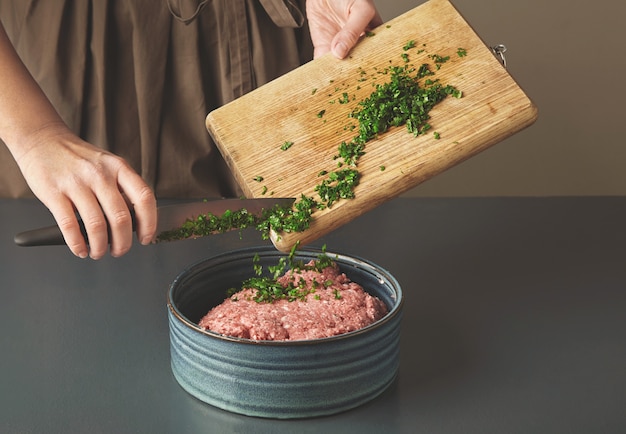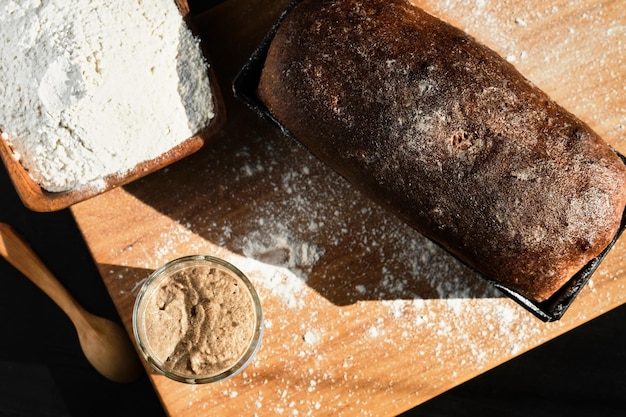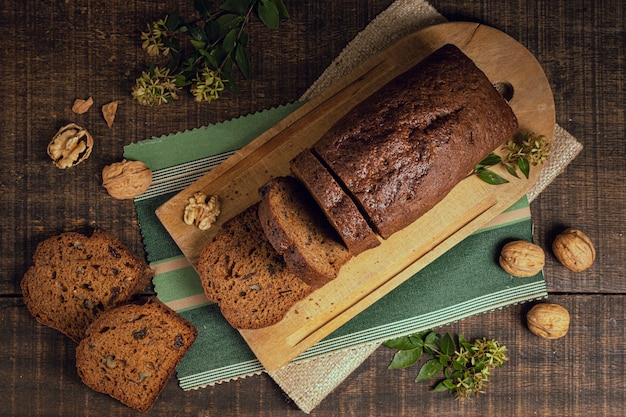Let's be honest, there's nothing quite like the comforting aroma of a freshly baked meatloaf. But when you're dealing with a 3lb behemoth, the question of cooking time can be a real head-scratcher. You don't want it to be dry and overcooked, but you also don't want a raw center, right? Well, I'm here to guide you through this culinary journey, drawing on my own experiences and those of fellow meatloaf enthusiasts. Get ready to dig in!
(Part 1) The Meatloaf Chronicles: My Personal Journey

My love affair with meatloaf began in my childhood, watching my grandmother meticulously craft these savory loaves, each bite filled with nostalgia. But back then, we weren't dealing with a 3lb monster. Those were much more manageable sizes. Over the years, I've tackled countless meatloaf creations, from classic family recipes to bolder, more adventurous concoctions. And let me tell you, mastering the art of cooking a 3lb meatloaf is no small feat!
The First Encounter
My first attempt at a 3lb meatloaf was a bit of a disaster. I was overconfident, thinking it was just like cooking a smaller one, only scaled up. But, alas, it was a recipe for disaster! The middle was still raw, while the outside was a crispy, well, let's just say overdone mess. That's when I realized there's more to meatloaf than meets the eye.
Lessons Learned
From that initial mishap, I learned some valuable lessons. First, cooking time is crucial. Second, relying solely on visual cues isn't enough, especially with a larger loaf. You need a meat thermometer, my friend, to ensure it's cooked through to perfection.
(Part 2) Meatloaf 101: Unpacking the Basics

Now that we've established the importance of proper cooking time, let's delve into the foundational knowledge you need to confidently tackle a 3lb meatloaf.
Oven Temperature: The Golden Rule
Most recipes recommend baking a meatloaf at 350°F (175°C). This temperature provides a consistent heat that cooks the meatloaf evenly, creating a beautifully browned crust and a moist, flavorful interior. I've experimented with higher temperatures, but I've found that they often lead to over-browning before the center is cooked through. You don't want to end up with a burnt masterpiece, do you?
The Composition: Meat Matters
The type of meat you use is another crucial factor. The fat content, in particular, plays a significant role in cooking time. Leaner meats like ground turkey tend to dry out more easily, so you might need to add extra moisture to the mix, perhaps with some breadcrumbs, oats, or finely chopped vegetables. I've found that a blend of ground beef and pork often results in a juicier, more flavorful meatloaf. Experiment with different combinations to find your personal preference.
(Part 3) The Time Factor: Estimating the Cook

So, how long do we actually cook this 3lb meatloaf? There's no one-size-fits-all answer, but here's a general rule of thumb:
A General Guideline
For a 3lb meatloaf, expect to cook it for approximately 1 hour and 15 minutes to 1 hour and 30 minutes. However, this is just a starting point. Remember, each loaf is unique, influenced by its shape, size, and the ingredients you use.
The Importance of Checking Doneness
The true test of doneness lies within the meatloaf itself. You need a meat thermometer, and I can't emphasize this enough! Aim for an internal temperature of 160°F (71°C). This ensures the meat is thoroughly cooked and safe to eat. Remember, we're aiming for juicy, delicious perfection, not a risky gamble with raw meat.
(Part 4) Shape Shifters: Adjusting for Different Loaves
Now, we all have our own preferences when it comes to meatloaf shape. Some prefer a classic round loaf, while others opt for a more elongated shape. This can affect cooking time, so it's important to make adjustments.
Thin and Long vs. Thick and Round
A thinner, more elongated loaf tends to cook faster than a thick, round loaf. Why? Because the heat can penetrate the meat more quickly when the surface area is greater. For a thinner loaf, you might need to shorten the cooking time by 10-15 minutes. But for a thicker loaf, you might need to add a bit more time.
Always Check the Internal Temperature
No matter the shape, always double-check the internal temperature with a meat thermometer. Don't rely on visual cues alone. That little extra time spent ensuring the meatloaf is cooked through will be worth it in the end.
(Part 5) Top It Off: The Art of Toppings and Basting
We've tackled the basics of cooking time, but a meatloaf isn't complete without a delicious topping and a touch of basting. Think of it as the finishing touches that elevate this humble dish to new heights.
Toppings: A Crown of Flavor
A topping adds a layer of flavor and a visually appealing element to your meatloaf. A classic ketchup glaze is a personal favorite. The sweetness and tang of the ketchup complement the savory meatloaf perfectly. But you can get creative with other options like a mix of ketchup, brown sugar, and mustard, or even a bolder bbq sauce glaze.
Basting: A Moisture Boost
Basting is like giving your meatloaf a little hug of flavor and moisture while it bakes. I typically use a mixture of broth and water, but you can also use wine or even fruit juice. Just drizzle it over the meatloaf every 20 minutes or so for added juiciness and a deeper flavor.
(Part 6) Common meatloaf mistakes: Learning From Experience
Let's face it, we've all made our share of kitchen blunders. But with meatloaf, there are some common mistakes to avoid, learned through trial and error (and a few burnt loaves).
The Under-Mixing Dilemma
You've got to get your hands dirty and really mix those ingredients! A well-mixed meatloaf is more cohesive, less likely to fall apart during cooking. I've definitely had my share of meatloaf collapses, resulting in a crumbly mess that was more challenging to slice and serve.
Over-Mixing: A Recipe for Toughness
But be careful not to overdo it. Over-mixing can lead to a tough, rubbery meatloaf. Aim for a gentle, even mix that incorporates all the ingredients without overworking the meat.
Forgetting the Thermometer
This is the biggest mistake you can make. Don't rely on visual cues alone, especially with a 3lb meatloaf. It's the only way to guarantee your meatloaf is cooked through, preventing those unfortunate instances of raw centers.
(Part 7) Meatloaf Mastery: Tips for Perfection
We've covered the basics, the pitfalls to avoid, and the art of toppings and basting. But what are some key tips to ensure your 3lb meatloaf is truly a triumph?
Choosing the Right Meat: A Matter of Flavor
The foundation of any great meatloaf is the meat itself. I often use a mix of ground beef and pork, finding that the combination creates a juicy and flavorful result. But you can also experiment with ground veal or even ground turkey. Just remember to adjust your cooking time accordingly, as we discussed earlier.
Adding Moisture: A Secret Weapon
A touch of moisture is key to preventing a dry meatloaf. I frequently use breadcrumbs, oats, or finely chopped vegetables to add moisture and bind the ingredients together. This is especially helpful when using leaner meats like ground turkey.
Seasoning with Flavor: A Symphony of Spices
Don't be shy with the seasonings. Salt, pepper, garlic powder, onion powder, and paprika are my go-to spices for a flavorful meatloaf. But you can also add herbs like parsley, thyme, or oregano, depending on your personal preference.
(Part 8) Beyond the Basics: Elevating Your Meatloaf Game
You've mastered the art of cooking a 3lb meatloaf. But what if you want to take it to the next level, adding those creative twists and side dishes that elevate this humble dish into a culinary adventure?
Meatloaf Muffins: Portion Control and Convenience
Let's be honest, sometimes we crave a smaller portion, or we need something quick and easy for lunch or dinner. That's where meatloaf muffins come in. Just follow your favorite meatloaf recipe, but divide the mixture into individual muffin tins. They're perfect for portion control and make for a fun and convenient meal.
Creative Fillings: Surprises Within
Imagine biting into your meatloaf and discovering a hidden treasure – a nugget of cheese, a crispy piece of bacon, or a burst of savory mushrooms. It's all about adding those unexpected surprises that make your meatloaf stand out. Just make sure you don't overdo it, or your meatloaf might become too dense and challenging to slice.
Side Dish Perfection: Complementary Flavors
No meatloaf is complete without a symphony of side dishes to complement its savory flavors. My personal favorites include mashed potatoes, creamy green beans, and a fluffy cornbread. But you can also explore other options like roasted vegetables, a refreshing coleslaw, or a simple salad to create a complete and satisfying meal.
(Part 9) FAQs: Addressing Meatloaf Mysteries
You've got your meatloaf game down pat, but there are always those lingering questions that pop up. Let's tackle some frequently asked questions about cooking a 3lb meatloaf.
Can I Freeze Meatloaf?
Absolutely! Meatloaf is a fantastic freezer meal. Just let it cool completely, then wrap it tightly in plastic wrap and aluminum foil. It can be frozen for up to 3 months.
How Do I Reheat Meatloaf?
You have several options for reheating meatloaf: the oven, the microwave, or even the stovetop. I prefer the oven, setting it to 350°F (175°C) for about 20 minutes, or until it's heated through.
What If My Meatloaf Is Overcooked?
Don't despair! Even an overcooked meatloaf can still be salvaged. It might be a bit drier than you'd prefer, but it can still be tasty. Just serve it with a generous amount of gravy or sauce to add moisture.
Can I Use a slow cooker?
Yes, you can! A slow cooker is an excellent option for cooking meatloaf. Just follow your favorite recipe, but cook it on low for 6-8 hours.
What If I Don't Have a Meat Thermometer?
If you don't have a meat thermometer, you can still get a rough idea of doneness by checking the meatloaf with a toothpick. It should come out clean, but this method is not as reliable as using a thermometer.
(Part 10) Final Thoughts: Meatloaf Mastery Awaits
And there you have it, my friends! Cooking a 3lb meatloaf might seem intimidating at first, but with practice and these tips, you'll be whipping up culinary masterpieces in no time. Remember, it's all about those juicy flavors and a touch of creativity. So go forth, embrace your inner meatloaf maestro, and conquer this culinary challenge.
Everyone is watching

How to Cook Frozen Lobster Tails Perfectly: A Step-by-Step Guide
RecipesLobster. Just the word conjures up images of lavish meals, special occasions, and a taste of luxury. But let's...

Pigs in a Blanket Cooking Time: How Long to Bake for Perfect Results
RecipesAh, pigs in a blanket. Just the name conjures up images of those delightful little parcels of crispy pastry en...

Pork Fillet Cooking Time: How Long to Cook It Perfectly
RecipesPork fillet, or tenderloin as it's sometimes called, is a real favourite in our house. It's so versatile, and...

The Ultimate Guide to Cooking Delicious Frankfurters
RecipesLet's face it, we all love a good frankfurter. It's a classic, simple, and always satisfying. But let's be rea...

Wolf Meat Recipes: A Guide to Cooking Wild Game
RecipesLet's be honest, you don't see wolf meat at your local butcher shop every day. It's a bit of a wild card, but ...
